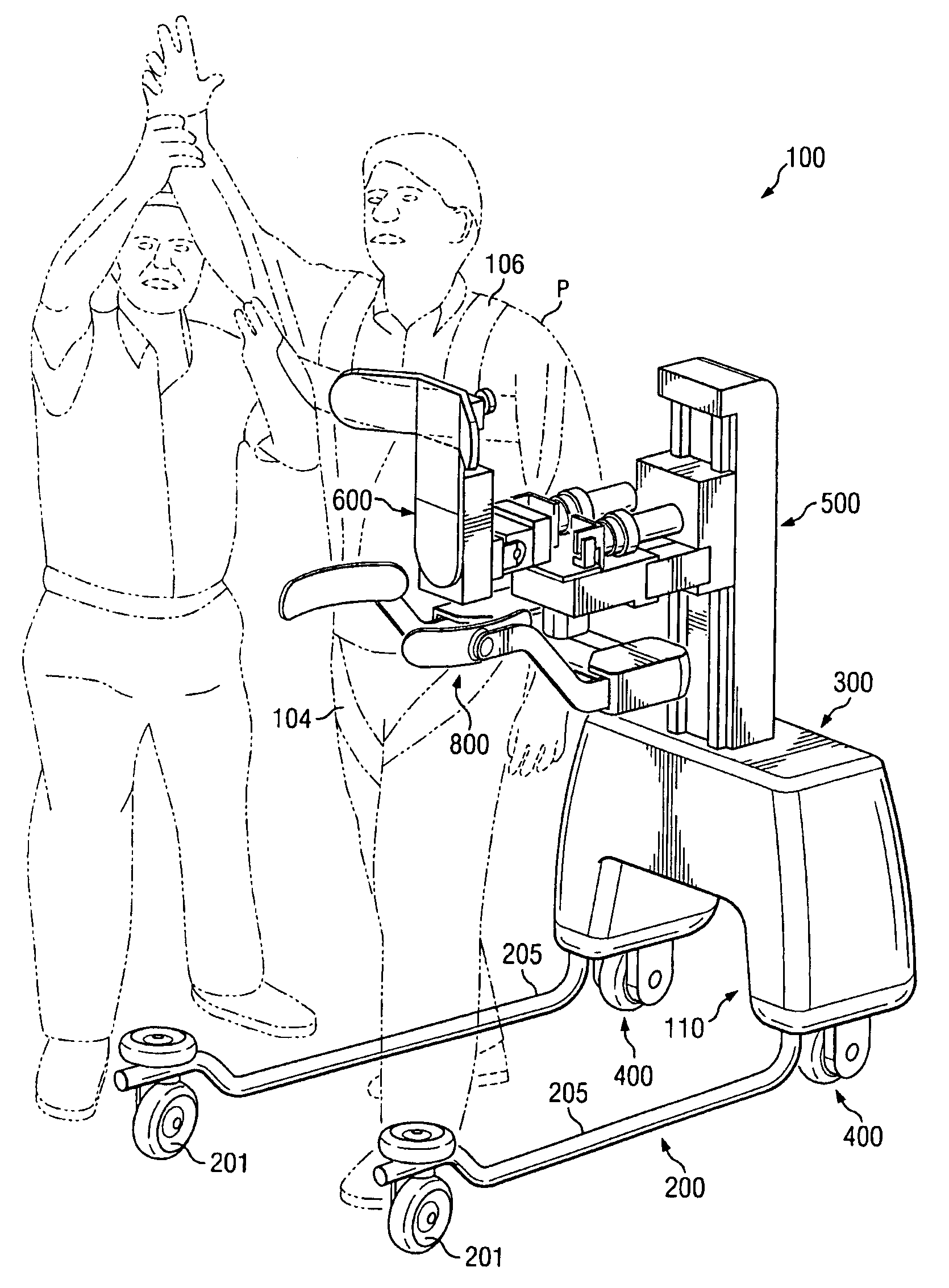Walking and balance exercise device
a walking and balance exercise and walking technology, applied in the field of walking and balance exercise devices, can solve the problems of limiting the access of the patient's legs, affecting the efficiency of physical therapy, and the device has not seen wide use, so as to ensure the safety of the patient, enhance the efficiency of physical therapy, and challenge the patient safely
- Summary
- Abstract
- Description
- Claims
- Application Information
AI Technical Summary
Benefits of technology
Problems solved by technology
Method used
Image
Examples
Embodiment Construction
[0039]According to one aspect of the invention, a gait and balance trainer is provided which includes a body harness, a responsive support system and wheels. A patient wears a pelvis harness and a torso harness which are connected to the responsive support system, whose motion with respect to the ground is controlled by at least two of the wheels. The responsive support system is designed to accommodate back and pelvis movement during walking by means of several active and passive degrees of freedom. The purpose of this is to allow natural walking patterns as well as to incorporate balance training into the exercise. The device according to the invention is capable of maintaining proper posture for weaker patients and can support a therapist-selected amount of their body weight.
[0040]In one use, the present invention allows a patient's natural walking body dynamics to occur unimpeded while providing a safety mechanism. The present invention can be used by the therapist in many ways ...
PUM
 Login to View More
Login to View More Abstract
Description
Claims
Application Information
 Login to View More
Login to View More - R&D
- Intellectual Property
- Life Sciences
- Materials
- Tech Scout
- Unparalleled Data Quality
- Higher Quality Content
- 60% Fewer Hallucinations
Browse by: Latest US Patents, China's latest patents, Technical Efficacy Thesaurus, Application Domain, Technology Topic, Popular Technical Reports.
© 2025 PatSnap. All rights reserved.Legal|Privacy policy|Modern Slavery Act Transparency Statement|Sitemap|About US| Contact US: help@patsnap.com



